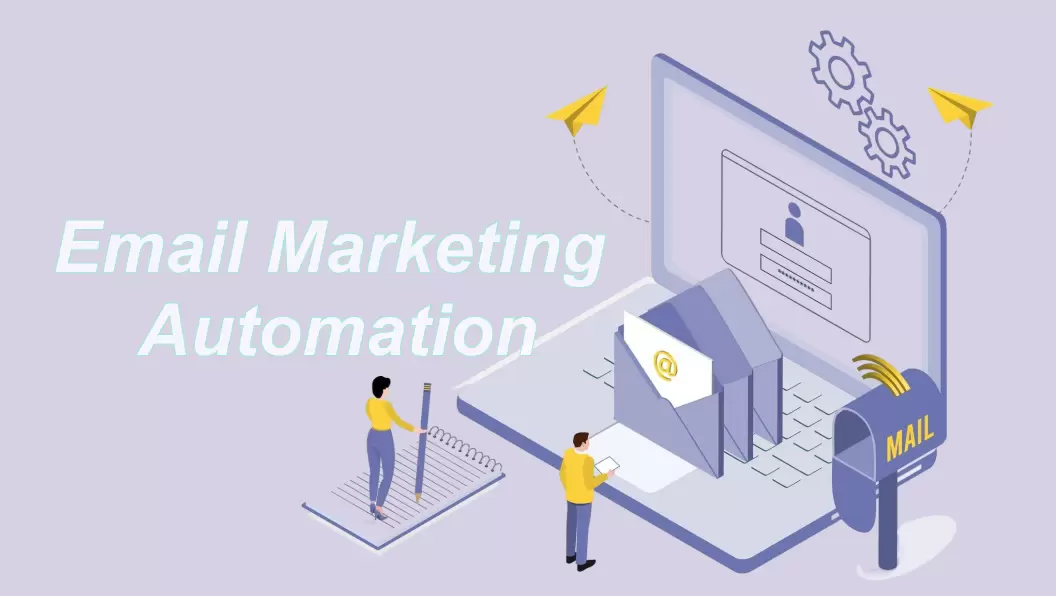The quality and reliability of your Internet Protocol (IP) is important to ensure email deliverability and create a strong brand identity. Several other factors like domain reputation also affect this process.
However, IP warming is one of the most effective ways of ensuring your email reaches the target audience. It can significantly increase the success and effectiveness of your email marketing campaigns.

We will dive deep into the basics of IP warming, how it works, and how it is different from domain warming.
Overview of IP Warming
Let's explore the three main aspects of IP warming.
1. What is IP Warming?
 Definition
Definition
IP warming or IP warm up means sending emails from a new IP address and slowly increasing the number of emails being sent from that particular IP. Generally, a predetermined schedule is followed to ensure the IP does not get flagged and can be built up as a positive and authentic address.

Source:https://cdn.prod.website-files.com/
It ultimately helps you establish a positive reputation with internet service providers (ISPs) that ensures your emails do not land in spam folders. IP warming is an essential part of ensuring high email deliverability with any email service provider (ESP) to ensure they are reaching the target audience.
2. How IP Warming Works?

The exact process of IP warming can vary from company to company. Nevertheless, a general IP warming process involves:
- Implement a strong email authentical protocol to present your IP address as a secure and trusted address for the ISPs. It also allows the receiving servers to verify your emails quickly and ensure maximum safety.
- Switch to a dedicated IP, as the warming process can fail on a shared IP. A dedicated IP address ensures you have complete control over the IP warming process.
- Domain reputation has a significant impact on the authenticity of your IP, so it is important to start improving domain reputation as part of the IP warming process.
- Get familiar with the daily sending limits of different ESPs. For instance, Gmail allows only 500 emails per day, while Microsoft allows 10000 emails per day. So, choose the ESP that can fulfill your requirements.
- Don't add any sort of spammy content or words to your emails because spam filters can quickly detect them and flag your entire IP as a spammy address.

Source:https://www.warmupinbox.com/
This entire process of IP warming becomes quick and easy by following these best practices:
- Sending out emails in low volumes over a few weeks.
- Gradually increasing the number of sent emails to full capacity as per the email list or expected requirement of a business.
- Make sure that the email list is clean and authentic. In other words, it should have email addresses that have opted in to get emails from you.
- Use an email validation service to verify the mailing list and get rid of any fake email addresses and bots that can increase your bounce or spam rate.
- Start the IP warming process by sending a small volume of emails to your most engaged customers. You can focus on the subscribers who have recently signed up first as there's a high chance that they will open the emails.
You can start increasing the sending volume every three to four days and cover a wider audience. Here's a suggested schedule for sending emails to successfully warm up your IP:

Source:https://static.wixstatic.com/
Use a reliable platform like EngageLab to monitor email performances during the IP warming process. If you notice any significant deliverability issues like a bounce or high spam score, you should pause the IP warming process.
Overall, you should be able to grow the send volume of emails over four to six weeks and ensure high deliverability.
Get Started For Free3. Why Should You Do IP Warming?
IP warmup is critical for email deliverability. You should do IP warming because it significantly enhances your IP reputation so that ISPs trust it enough to send your emails to the recipient's inboxes. Hence, it prevents your emails from getting blocked by spam filters.
Here are the key benefits of IP warming:
- If you use a completely new IP address to send a large volume of emails, ISPs, and ESPs can send them to spam, but IP warming can prevent this issue.
- IP warming, coupled with domain warming, helps you build an authentic and reliable name for your brand.
- Even if you have a small email list, you should still focus on IP warming to bring scalability to your business and keep reaching new and wider audiences.
Despite all these benefits, it is important to note that IP warming is not the only factor that ensures high email deliverability. There are several other factors involved in this process, such as domain warming.
What is Domain Warming?
Just like IP warming, domain warming means sending emails from a new domain to establish its reputation as a reliable domain. The domain warming process typically takes about a few weeks. In this process, the sender has to slowly increase the volume of emails regularly to enhance its reputation.
Importance of Domain Warming
The reputation of a domain is similar to how we have credit scores to demonstrate our financial credibility. New domains have to go through the warming process to earn their reputation and ensure the ESPs recognize them as reliable sources of sending emails.
Without domain warming, there is a high chance that the emails you send are detected and filtered to the spam folder instead of landing in the inboxes.

In addition to its technical benefits, domain warming is also useful for marketing and branding purposes. Having a reputable domain name is useful in making a mark on your target audience's mind and making sure they will remember your brand for a long period.
Sending out marketing emails with a generic brand name or domain is not a good idea as it can cause the recipients to ignore your emails and perhaps even report them as spam.
Therefore, domain warming can ensure high email deliverability, better branding, and greater name recognition.
Key Differences Between IP Warming & Domain Warming
Both domain warming and IP warming are important processes through which you can enhance your reputation and bring credibility with ESPs to ensure email deliverability. However, even with similar goals, there are a few key differences between these techniques:
- Primary Focus: The focus of IP warming is on establishing a positive reputation for your IP address, while domain warming focuses on building credibility for the domain name.
- Method: Domain warming includes gradually increasing the number of emails being sent from a particular email with limited monitoring, but IP warming requires gradually increasing the volume of emails with comprehensive monitoring of bounce rates and spam complaints.
- Usage: Domain warming is essential when you are switching to a new domain or reactivating a domain. IP warming is important when you are using a dedicated IP address for the first time or after a long period.
- Timeframe: Domain warming is typically a longer process than IP warming because it involves building domain reputation from scratch. IP warming can generally be completed within a few weeks by following the right protocols.
Both IP warming and domain warming are important processes, so companies should focus on building a strong reputation for both the domain and IP. With EngageLab , you can easily achieve both of these goals.
EngageLab & Email Delivery
EngageLab, being a powerful customer engagement tool, allows you to build credibility for your domain and IP to ensure high deliverability. You can use EngageLab to set up comprehensive email marketing campaigns and use its numerous features to ensure all your emails reach the target audience at the right time.
Get Started For Free1. How to use IP Warming in EngageLab
EngageLab is a platform that is meant to support businesses of all types and sizes in running a successful email marketing campaign. We are aware of the challenges and limitations that come with sending emails with a new IP or an address that has a poor reputation.
Therefore, we can help you in the IP warming process. All you need to do is get familiar with the configuration process of email campaigns and contact our technical support team so we can help you with this important process.

Following are some of the key benefits you can enjoy by using EngageLab for IP warming and sending emails:
- It has a powerful and stable email delivery system to ensure high deliverability to a wide global audience.
- You can create and manage comprehensive email marketing campaigns and track their performance in real-time.
- The technical customer support team is available to help you with procedures like IP warming and setting up email marketing campaigns.
- Comprehensive email analytics, such as open rate or soft bounces, can help you tweak marketing strategies from time to time.
- EngageLab can facilitate enterprises in all kinds of email authentication procedures, such as SPF, Domain-based Message Authentication, etc.
- You can rely on EngageLab's automation features to ensure high quality, efficiency, and security in email marketing campaigns.

2. How to Improve Email Delivery Beyond IP Warming?
It is important to reiterate the fact that IP warming is only one part of ensuring email deliverability. There are several other methods and strategies that you can follow to improve email delivery rates:







Conclusion
If you want to simplify the entire process of sending emails to a large email list, you should sign up for a free trial of EngageLab today. From choosing email templates to crafting an effective email campaign, you can manage all these features within the user-friendly interface of EngageLab.
Moreover, EngageLab follows the best practices of crafting and sending emails in bulk, so you can expect to send a massive volume of emails all around the world with maximum deliverability.
Get Started For Free






